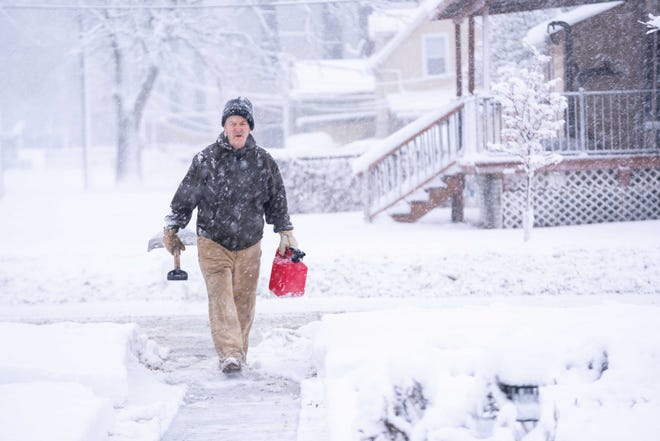After a quiet and mild December across much of the United States, Mother Nature is now making up for a windy and cold January, and more wild weather is on the way.
The deadly storm sweeping across the entire eastern United States on Tuesday is the opening act for what's to come over the next week: a potential “bomb cyclone” blizzard in the Midwest, a blast in the Arctic caused by a polar vortex, and perhaps the first real East Coast blizzard in years.
“The weather is making up for lost time in terms of wintry and snow conditions after a relatively mild, snow-free start to the season,” AccuWeather Senior Meteorologist Alex Sosnowski said.
During Tuesday's storm alone, wintry travel conditions were reported over more than 750,000 square miles, according to AccuWeather. The massive storm affected more than 30 states with snow, ice, rain or thunderstorms, covering more than 2 million square miles. At least three people died in the storm.

Brewing a “bomb cyclone”?
The next storm, expected to move across the Midwest, South and East from late Thursday into Saturday, could be stronger than Tuesday's storm, forecasters said.
The coming storm will also bring a second round of snow, strong winds, severe thunderstorms and heavy rain, just days after Tuesday's storm, said Jonathan Erdmann, a meteorologist at Weather.com.
Snow is likely to accumulate in several major Midwestern cities, including Chicago, Detroit and Kansas City. Up to 2 feet of snow is possible in some areas, making travel difficult or even impossible, AccuWeather said.

Like Tuesday's storm, more severe thunderstorms are expected to blow across the South and Southeast, the Storm Prediction Center warned. “Strong thunderstorms are likely to develop Thursday evening across portions of central and eastern Texas into the lower Mississippi Valley, where storms may pose an increased risk for severe hail, wind and tornadoes before dawn Friday,” the forecast center said.
As with the current storm, more strong winds and flooding rain are expected in the mid-Atlantic and Northeast by Friday and into Saturday, AccuWeather meteorologist Bob Larson told USA TODAY.
This next powerful storm could “rapidly intensify” into a rare “bomb cyclone” over land, meteorologist Ryan Mau said on X, Twitter previously. A bomb cyclone is essentially a winter cyclone, in terms of intensity.
Polar vortex to enter the arctic air
Thanks in part to the return of the polar vortex, the coldest air of the season is expected to eventually blow across the central and eastern United States next week, the National Weather Service said.
“The stratospheric polar vortex is now extending across North America,” National Oceanic and Atmospheric Administration climate scientist Amy Butler wrote Tuesday afternoon.
How cold will it be? By Monday morning, 88% of the contiguous United States could see temperatures below freezing. The extreme cold is expected to extend to the Gulf Coast, with some weather models showing the entire state of Texas below freezing on Monday and Tuesday.
The winds are also expected to be extremely cold, with the weather service warning of “dangerous” wind chill temperatures across much of the country.
Temperatures in the Iowa caucuses next Monday evening are expected to be extremely cold, possibly approaching zero across almost all parts of the state, the Des Moines Weather Service said.
“Now is the time to check your car batteries, as they will be gone from shelves next week,” the weather service said.

Blizzard on the East Coast next week?
Although it's still too early to make a specific forecast, computer models hint at the possibility of another storm next week, one that could finally bring snow to snow-starved major cities in the Mid-Atlantic, like Washington and Philadelphia.
Both cities have gone nearly two years without seeing an inch of snow.
The weather service said on Tuesday that there was a chance of heavy snow in parts of the east on January 16 and 17.
Unlike previous storms that mainly brought rain, there may be enough cold air for snow to fall, forecasters said. However, Larson said it's too early to say for sure, and major cities could see rain again next week, another disappointment for snow lovers out there.


